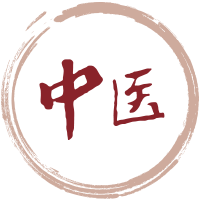
How is the Western Medicine and Chinese Medicine integrated in China?
by Dr. Zhuoling Ren 1999
Editors Note:
Many people have asked about integrated medicine achievement in China.
Here we attached is an article written by Dr. Zhuoling Ren at year 1999.
There are many new development during all of these year in this topic, but the direction it was going may interesting you. What need to be mentioned is “the Qing Haosu in herbal medicine research” in Dr. Ren’s 1999 article, because the Chinese doctor TuJoJo who worked on this project was recent Nobel prizing winner and this the first time Chinese scientist won Nobel prize …
Integrating Traditional Chinese Medicine and Western Medicine is one of the major practices in China. Many physicians have been trained in both Traditional Chinese Medicine and Western Medicine. An integrated treatment approach takes advantage of both systems and avoids the shortcomings of each of them. The clinical results of this approach are satisfactory. Here are some outstanding achievements that have been made by integrated treatment.
Bone Fracture: The traditional principle of treatment by Western Medicine is rigid fixation and complete rest. However, in recent years Chinese physicians and researchers have adopted the properties of Traditional Chinese Medicine and have developed a new principle which is combining movement and immobilization, care of both the skeletal and muscular elements, and management of both internal and external injuries. This treatment has been successfully applied to tens of thousands of patients. This principle has been proven to compensate the disadvantages of the former way of treatment such as slow healing, muscular atrophy, articulate stiffness, tendon adhesion and so on. the new treatment principle has been clarified in a biomechanic scope.
Qing Haosu in herbal medicine research: One historical milestone is Qinghaosu and its derivatives, dihydro-ginghausu, in treating malaria, especially malignant malaria.
Emergent Cases Non-surgical Treatment: Integrated treatment has turned many emergent cases away from the operating room. For example, 80% of ectopic pregnancies are treated in a non-surgical way (herbs, drugs, acupuncture ). Other emergent cases such as severe cholongitis are also treated in non-surgical ways.
Cancer: In reducing the side effects of radiotherapy and chemotherapy, decoctions of tonifying qi and nourishing yin have been proven very effective. These decoctions could strengthen the body’s resistance and / or restore normal function of the body. They are also proven to be effective in improving the immune function of the patients.
Infectious Diseases: Treatment against both the bacteria and the toxins has reduced the mortality and improved the prognosis of multiple organ failure.
Intractable Diseases: Intractable diseases such as chronic atrophic gastritis, lupus erythematosus, severe hepatitis , scleroderma, multiple sclerosis, have been treated with an integrated approach with clinic results greatly improved.
Immunological Sterility: Using the Traditional Chinese Medicine principle of nourishing yin and reducing fire has shown excellent results with 25% of patients achieving pregnancy, In some of the patients, antisperm antigen and / or antipellucida antibodies are converted to negative.
Pain: Acupuncture treatment of more than 200 kinds of pain diseases are well recognized and accepted throughout the world. The neurobiochemistry mechanism of acupuncture anesthesia has been explained by many researchers in China.
There is much more to this list. In General, the integrating of Western Medicine and Traditional Chinese Medicine is still very active in both research and clinic practice and is considered the 21st century’s new medicine.
Photo: FreeImages.com/Toronox

